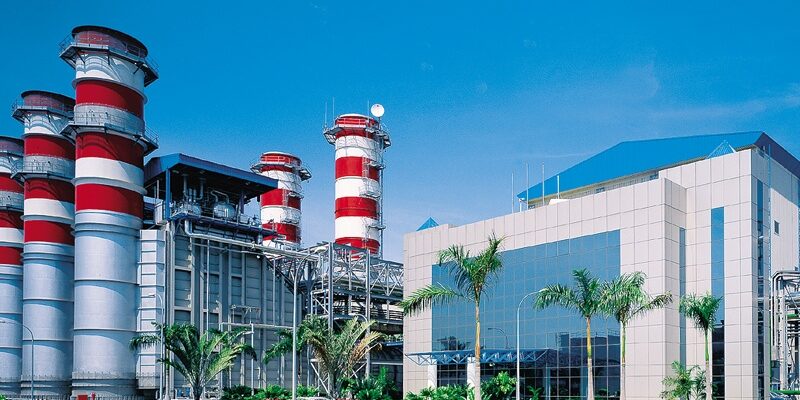Quantum Filtration Medium (Quantum) conducted a series of site visits to assess options for upgrading the water treatment plant (WTP) supplying the Kuala Langat Power Plant (KLPP) in Malaysia. The goal was to highlight low-cost options with a low impact on plant serviceability, while increasing the WTP’s performance, efficiency, reliability and ability to cope with the seasonal load changes experienced in the raw water supply.
CASE STUDY: UPGRADING THE KLPP WATER TREATMENT PLANT
KLPP has been in operation since 1996, using combined cycle gas turbine, and the plant is currently contributing 675MW of electricity generation capacity to the grid.
The ability of the plant to supply electricity to the grid according to its obligation under the Power Purchase Agreement depends on a number of factors, including a reliable clean water supply for the purpose of cooling.
On average, KLPP draws 20,000 cubic meters of treated water for its daily operation. For optimal operation and life of the plant, the water needs to be as clean as possible with low content of organic or inorganic substance.
The potential for considerable improvements to the WTP were identified as:
- Raw water clarification, prior to media filtration
- Optimisation of the polymer dosing program
- Changing of the media in the rapid sand filters to DMI-65®
- Upgrading the water treatment plant for optimal quality using DMI-65® filtration media
Clarification and polymer optimisation
It was identified that the high turbidity and suspended solids levels in the raw water could be greatly reduced by clarification prior to the water entering the WTP. A pre-clarification stage would dramatically reduce the load on the current plant.
A traditional clarifier and upstream polymer dosing system to handle 1ML/hr was not practical as it would cost well over US$1 million and take up considerable land area to install.
With a very low retention time, this type of system would also require very high chemical usage. Quantum did however recognise that the existing raw water dams could potentially be modified to act as a clarifier.
Due to the location of the inlet pipe and the balance pipe, a wall could be created to divert the incoming water around the lagoon to avoid short-circuiting, which would greatly reduce settling time in the lagoon.
This would also reduce the requirement for sludge removal, as a large per cent of the solids would settle within the smaller walled area of the lagoon.
A vacuum pump with automatic valves would be used to select which line would be periodically pumped out.
Ideally, polymer would be dosed at the river water inlet to allow mixing in the transfer line to the lagoon.
In this case, as the river intake is located around 1km from the plant, the polymer was added into the pipe before the raw water entered the lagoon to allow for maximum mixing as the water entered the lagoon. This required additional polymer preparation and dosing near the lagoon inlet.
Rather than build another liquid polymer system similar to the existing unit at the WTP, Quantum suggested a powdered polymer batching system be installed to greatly reduce polymer costs.
A range of polymer samples were supplied during the site visit and jar testing was carried out to see which particular polymer was most suited to this raw water.
A local polymer supply company was able to supply a very similar product in powdered form and at a very reasonable price that would suit the batching system mentioned above.
Replacement of the rapid sand filter media
During a site visit, one of the rapid sand filters was drained for inspection. The sand in the filters had never been changed, and was very hard-packed and in need of replacement. As the filter was filled with water, the infiltration rate of the incoming water was very poor.
Most of the water flowed across and over the top of the sand. Water also drained through cracks in the hard-packed sand rather than evenly filtering through. Quantum proposed replacing the media with DMI-65® filtration media.
The DMI-65® removes iron and manganese levels that may be encountered in the raw water source with varying quality. The DMI-65® requires a low level of free chlorine (0.1 – 0.3mg/L) to activate the media.
The DMI-65® also provides the perfect filtration coefficient, resulting in excellent mechanical filtration, and lowering suspended solids and turbidity levels.
While undergoing the media change out, it was recommended that all filtration nozzles were replaced. Inspection and repairs were also necessary to the actual concrete filters, as some nozzles had come free and there was damage to the filter floors.
The addition of the DMI-65® and replacement of the filtration nozzles would improve not only the quality of water from the media filters, but also the quantity of water through the filters.
The WTP can now run at its current capacity using only three of the four rapid sand filters, providing that the three ‘in-service’ filters are fully functional.
The following work was conducted on all four of the media filters, with each filter taking around six weeks to refurbish, commission and bring back into service.
Due to the poor condition of the existing sand media and the difficulty in accessing the media filters, the old media was manually removed.
The walls, floor and pipe work of the filter were then high pressure cleaned to remove the many layers of built-up fouling throughout the filter.
Once the filters were thoroughly cleaned, the old filter nozzles were removed. With the nozzles removed, several cycles of filling and dumping the water from the filter were repeated in an effort to clear any sand from the flow cavity beneath the filter floor.
Where a build-up of sand was detected (due to filter nozzles blowing out), the high-pressure hose was inserted through the nozzle anchors to break up the sand and allow flushing.
Ensuring superior filter performance
Investigation of the filter floors conducted early on in the process highlighted a need for refurbishment and preventative maintenance. The repairs to the filter floor, where filter nozzles had been blown out and damaged, required re-grouting and all the nozzle anchors replaced.
All of the filter nozzle anchors were tapped out to both clean the thread and assess the condition of the surrounding concrete. Half-inch BSP bolts were screwed into the nozzle anchor to ensure that they remained clean throughout the re-grouting and epoxy floor coating processes.
In areas where remedial work was required, the anchors were replaced and re-grouting performed around the anchor stem. Once the grouting had set, the entire floor of the filter was double epoxy coated to prevent similar damage to the filter in future.
When the epoxy coating was dry, a further inspection was carried out to assess the condition of the filter floor and repairs prior to installing the new filter nozzles.
Over the course of the upgrade, all the 11,250 filter nozzles were replaced. The replacement nozzles were of a finer slot spacing to cater for the finer DMI-65® media.
Before adding the supporting quartz filter gravel and DMI-65® media, an aeration test was completed on each filter to ensure the security of the nozzles, and check for an even flow of air across the filter area.
A 100mm layer of coarse quartz filter gravel was added to the filters to protect the filter nozzles from potential blockages due to fine media. A 600mm layer of the DMI-65® was then added to provide sufficient filtration bed depth, allowing for a 400mm freeboard to prevent loss of media during the backwash cycle.
The filters were then filled with water and dosed with 200L of liquid chlorine (12.5 per cent) to activate the DMI-65® media. Five or six cycles of backwashing were required to flush the chlorine solution until the water passing out over the overflow became clear. On completion of the backwash, the new DMI-65® media could be seen clearly.
After the replacement of the old sand media with DMI-65®, the performance results have been consistently excellent. The expected results from the media filters after the upgrade were: TSS < 5mg/L and Turbidity < 2 NTU.
The output of the media filters has seen a turbidity averaging below 1 NTU and a TSS consistently below 1mg/L. There have been no readings higher than 2 NTU, with turbidity and TSS generally undetectable and recorded as zero.
Achieving project objectives by upgrading water treatment plant
Overall, the upgrade to the WTP was a success, addressing the main objectives of the upgrade with excellent results.
“The upgrade of the KLPP WTP has increased efficiency and reliability, and its ability to better cope with the seasonal load changes experienced in the raw water supply,” Quantum Managing Director, Clive Hawkes, said.
“The high turbidity and suspended solids levels in the raw water have been greatly reduced by clarification prior to entering the plant. The existing plant is fixed in size and capacity, so a pre-clarification stage has dramatically reduced the load on the WTP.
“The combined effects of the additional clarification, polymer optimisation, new filter nozzles and addition of DMI-65® filter media, will see the plant achieve high water quality all year round and will allow for increased capability in times of high load.
“The major outcome of the upgrade was to provide low-cost options, utilising the existing plant and equipment to increase the quality and quantity of water, whilst reducing maintenance and ongoing operating costs.
“Quantum has managed to deliver cost savings and reduced maintenance whilst improving the quality of the water produced by the plant across a wide range of varying raw water qualities.”
Original article from ‘Upgrading a water treatment plant to ensure optimal water quality’ – https://utilitymagazine.com.au/
The outcome of the proposed upgrade is to provide low cost options utilising existing plant and equipment to increase the quality and quantity of water to the power plant, whilst reducing maintenance and on-going operating costs.



















